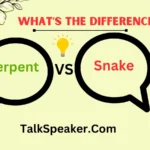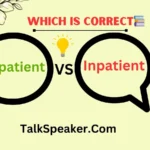Understanding the nuances of English sentence structures can be challenging, especially when it comes to phrasing questions and statements. The phrases “How Does it Work?” and “How it Works” are commonly used but serve different purposes in English.
This comprehensive guide will delve into the intricacies of these two phrases, helping you master their correct usage and improve your communication skills.
Understanding English Question Formation
English question formation involves specific rules that dictate how sentences are structured to inquire about information. These rules are crucial for clarity and accuracy in both written and spoken English.
Basic Principles of Forming Questions
To form a question in English, especially in the present simple tense, we generally use an auxiliary verb (like do, does, or did). This auxiliary verb precedes the subject and the main verb.
For example:
- Statement: “She works at a company.”
- Question: “Does she work at a company?”
In the case of “How Does it Work?”, the phrase is structured to ask about the mechanism or process of something. Here’s the breakdown:
- Auxiliary Verb: Does
- Subject: it
- Main Verb: work
Application to “How Does it Work?”
When using “How Does it Work?” you are asking for an explanation of the functioning or operation of something. This question format is used when you want detailed information about how a process or mechanism functions.
Exploring “How Does it Work?”
“How Does it Work?” is a question used to seek clarification about the operation or process of something. This structure is common in both formal and informal contexts and is essential for understanding detailed explanations.
When and Why to Use “How Does it Work?”
Use “How Does it Work?” when you need to inquire about the operational details of a system, device, process, or concept. Here are some scenarios where this question is appropriate:
- Technical Support: Asking about the functionality of a gadget or software.
- Educational Context: Inquiring about the workings of a scientific process or mechanism.
- Everyday Conversations: Seeking explanations for common tools or devices.
Examples in Different Contexts
- Technical Inquiry: “How does this new software update work?”
- Educational Setting: “How does photosynthesis work in plants?”
- Casual Conversation: “How does this coffee machine work?”
The Role of Auxiliary Verbs in Questions
Auxiliary verbs, such as do, does, and did, play a critical role in forming questions. They help to construct the correct interrogative structure and ensure clarity in communication.
Explanation of Auxiliary Verbs
Auxiliary verbs are used to:
- Form questions: Does he understand?
- Form negatives: He does not understand.
- Create different tenses: She has been working.
In “How Does it Work?”, the auxiliary verb does is used to form the question, making it clear that the speaker is seeking information about the working mechanism.
Examples Showcasing Auxiliary Verbs
- Present Simple Question: “Does it rain often here?”
- Past Simple Question: “Did they arrive on time?”
- Future Simple Question: “Will it be ready by tomorrow?”
Common Variations and Examples
While “How Does it Work?” is straightforward, variations and incorrect usages can often be confusing. Understanding these variations helps in mastering English question formation.
Common Variations
- “How Does it Function?”: Similar to “How Does it Work?” but uses “function” instead of “work.”
- “How Does this Mechanism Operate?”: More technical and specific to mechanisms.
- “How Does it Perform?”: Focuses on the performance aspect rather than the operational aspect.
Examples of Correct and Incorrect Usage
- Correct: “How does this new feature work in the app?”
- Incorrect: “How does this feature works in the app?” (Incorrect because “works” should be “work”)
Deciphering “How it Works” in Statements
“How it Works” is used in statements to explain the process or mechanism of something. This phrase is used when providing information rather than asking for it.
Explanation of the Statement Format
In statements, “How it Works” is used to describe the process. The structure includes:
- Subject: it
- Main Verb: works
This format is used to explain or describe how something functions.
When and Why to Use “How it Works”
Use “How it Works” when you are providing information or an explanation about the operation of something. It’s used in educational content, instructional material, and descriptions.
Examples Demonstrating Usage
- Instruction Manual: “Here’s how it works: You press the button to start the machine.”
- Educational Content: “This is how it works: Plants convert sunlight into energy through photosynthesis.”
- Product Description: “The new feature works by analyzing user behavior to provide personalized recommendations.”
Comparing “How Does it Work?” with “How it Works” in Context
Understanding the context in which each phrase is used is crucial for accurate communication. Let’s compare these two phrases to highlight their differences.
Side-by-Side Comparison
| Aspect | How Does it Work? | How it Works |
| Usage | To ask about functionality or process | To explain or describe the functionality |
| Context | Question format | Statement format |
| Example in Inquiry | “How does the new software work?” | N/A |
| Example in Explanation | N/A | “The software works by analyzing data.” |
Analysis of Subtle Differences
- Asking vs. Explaining: “How Does it Work?” is used when seeking information, whereas “How it Works” is used when providing information.
- Formality and Detail: “How Does it Work?” may be used in more formal or technical contexts, while “How it Works” is often used in educational or descriptive content.
Practical Scenarios
- Professional Setting: “How Does this new protocol work?” (asking about details)
- Educational Setting: “Here’s how it works: the scientific method involves several steps.” (providing an explanation)
Distinguishing Between Asking and Explaining
The distinction between asking a question and providing an explanation affects how you choose between “How Does it Work?” and “How it Works.”
Clarification of Asking vs. Explaining
- Asking: Use “How Does it Work?” when you need detailed information or clarification.
- Explaining: Use “How it Works” when you are giving an explanation or description.
Examples of Asking vs. Explaining
- Asking: “How does the engine work?” (You want to know the functioning of the engine.)
- Explaining: “The engine works by converting fuel into energy.” (You are providing information about how the engine functions.)
Conclusion: Mastering The Right Structures in English
In conclusion, understanding when to use “How Does it Work?” and “How it Works” is essential for clear and effective communication. Both phrases have distinct uses: one for asking about functionality and the other for explaining it. Mastery of these structures enhances both your writing and speaking skills.
Final Advice
- Practice Usage: Regularly practice using both phrases in appropriate contexts to improve your fluency.
- Context Awareness: Pay attention to whether you are asking for information or providing an explanation.
- Continuous Learning: Keep refining your understanding of English structures through reading and practice.
By following these guidelines, you can confidently use “How Does it Work?” and “How it Works” in your daily communication, ensuring clarity and precision in your English usage.
This blog post provides a thorough exploration of the differences between “How Does it Work?” and “How it Works,” offering insights and examples to help you use these phrases correctly in various contexts.

Sophie Mitchell, a seasoned English educator, brings her passion for language and years of teaching expertise to TalkSpeaker. With a knack for simplifying grammar and expanding vocabulary, she empowers learners to master English with confidence.




